Planning a capital campaign or a major new initiative?
When do you start talking to major donors?
Here’s everybody’s first (and most important) question:
Do we wait till our strategic plan is fully thought through and laid out?
Should we wait till the sketches, footprints and budgets are all complete for our hoped-for new buildings – and THEN go to our donors?
My answer is a VERY big “NO!”
Don’t wait!
Engage your major donors NOW in your strategic visioning conversations!
The time to go see your hoped-for major donors is very early on – when these ideas are just simmering around in your head as a happy future vision.
Why?
Because the VISION stage of everything is the most exciting stage of all.
It’s the moment of your greatest power. It’s where all the energy is.
Your major donor prospects might have lots to say about your plans.
It’s also where the fun is!
- “Shall we do this?
- “Or shall we do that?
- “Could we pull it off?
- “Who would need to be involved?
- “What would it take?
This is all fun stuff.
Don’t forget that this early process of thinking through your organization’s exciting future is a unique opportunity to engage your donors.
It’s a magic time for you.
You are living in a place of possibilities — considering new paths to take.
What better time to be sharing your ideas with your donors!
Don’t put your hoped-for major donors in a protected silo while you have all the creative fun.
Martin Luther King didn’t say “I have a strategic plan.”
Martin Luther King didn’t say, “I have a strategic plan.”
Instead he said, “I have a dream.”
And it was his dream – his vision – that captured the imagination, AND the participation of millions of Americans – and the rest of the world.
Invite your donors in!
Inviting a prospective major donor to be involved in helping to shape your vision is the highest compliment you can give him or her.
It gets the donor in on the ground floor.
She feels like she’s in the know.
She’s in the inner circle.
She’s been asked for her opinion and her input.
As fundraising consultants, we ask donors all the time how they feel about projects, how they feel about prospective campaigns, and what their thinking is on how to raise the money.
It surprises me that so many nonprofits are reluctant to have these kinds of conversations with their potential major donors.
Because you can’t possibly cultivate a donor – or ask for a gift – without discussing these issues!
But leadership is often reluctant to involve donors early.
Your leaders are saying “we can’t go to the major donors without everything lined up. It will make us look bad if we don’t have all the answers to their questions.”
They want to have the new plan completely thought out and finished up. And only then are they comfortable engaging leadership donors in conversations about the plan.
The future is where the fun is!
When should we start our campaign and engage our donors relative to the strategic planning process?
Here’s our answer: You probably should ALREADY be discussing your plans with your lead donors!
Cultivate Prospective Donors by Involving Them in Campaign Planning
There’s no better way to cultivate prospective donors than by involving them in your early planning.
It’s the first step in a full scale cultivation plan for a major gift:
- You want to get their curiosity up.
- You want to let them have some fun brainstorming with you about the right way to go.
- You want to get their buy-in early.
Easy to Get Your Foot in the Door with Donors
It’s so easy to get in the door with prospective donors during the planning phase. Why?
Because you are not asking for anything but their advice and best ideas. You’re honoring your donors by asking them to help you think through your plans.
3 Steps to Engage Your Major Donors Early On
1. Make a list of the 25 people whose commitments will be critical to the success of your campaign.
2. Brainstorm the various ways you might involve them in your planning.
Consider inviting them to participate in a planning meeting, serve on the Campaign Planning Committee, or review a draft of the plan, be part of a focus group, or simply give you advice and information about the community.
3. Next, develop a plan for involving those top 25 folks.
You don’t want The Ask or a Feasibility Study interview to be the first time they learn about your project.
Bottom Line:
Getting your major donor prospects thinking, talking and planning with you just about assures their buy-in into the campaign.
Smart fundraisers start here with them – at the VERY BEGINNING!

